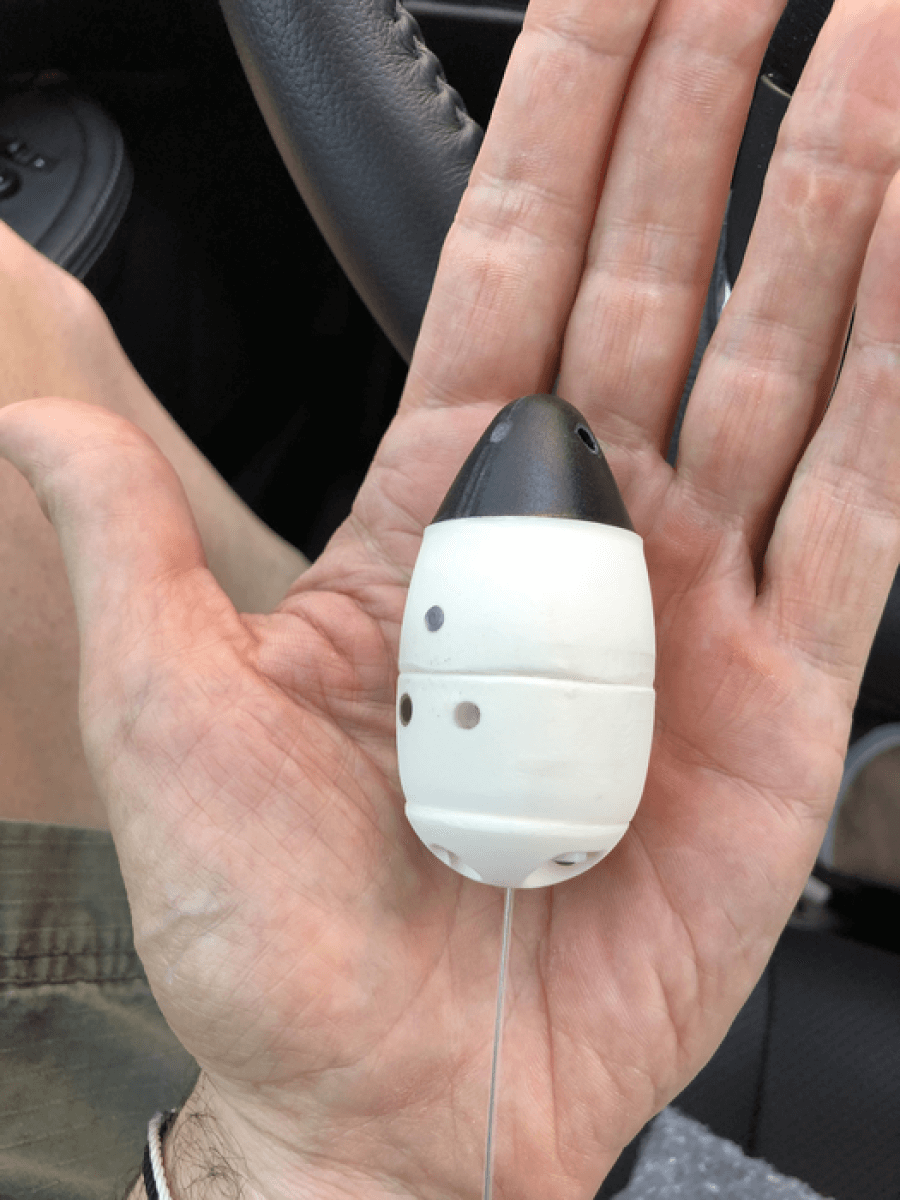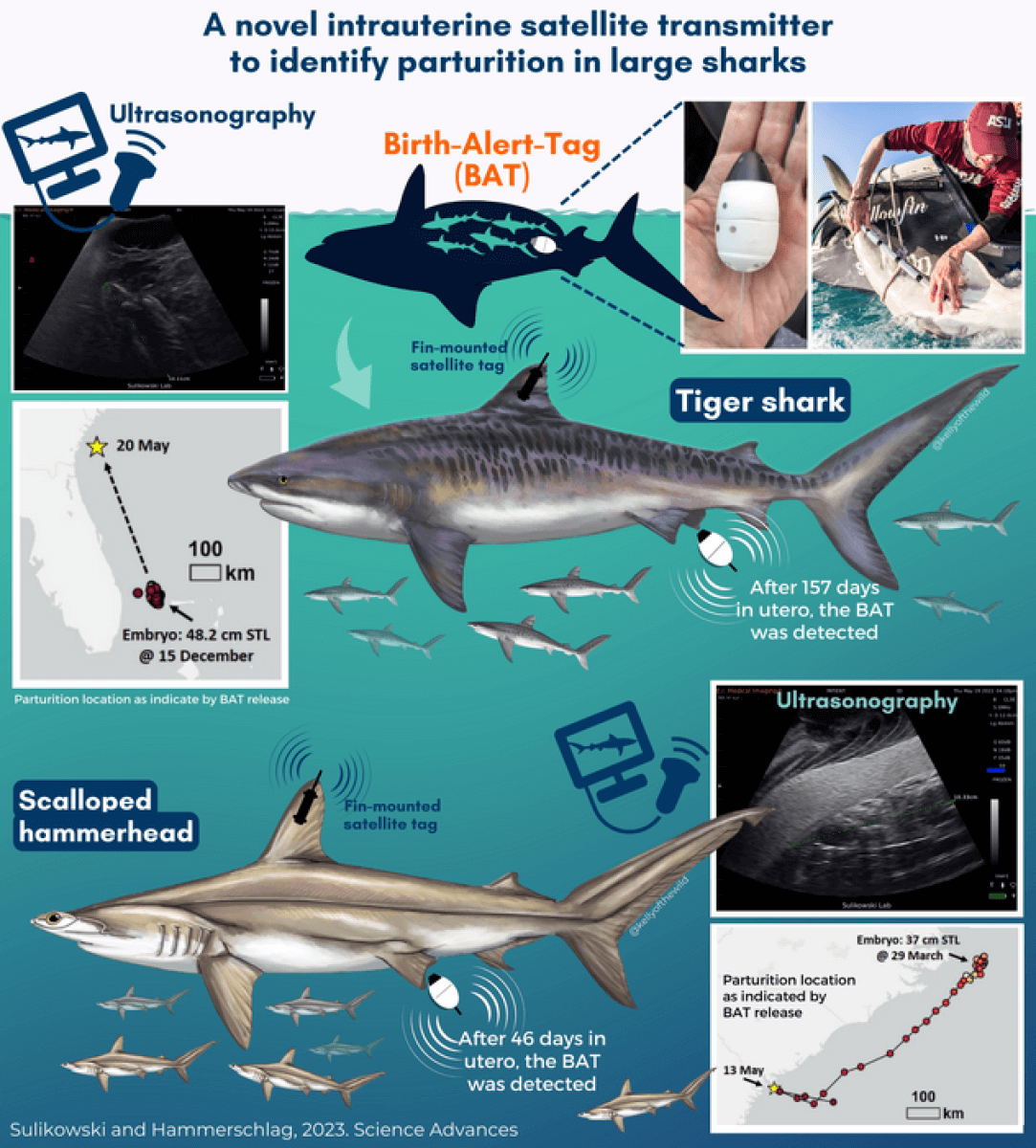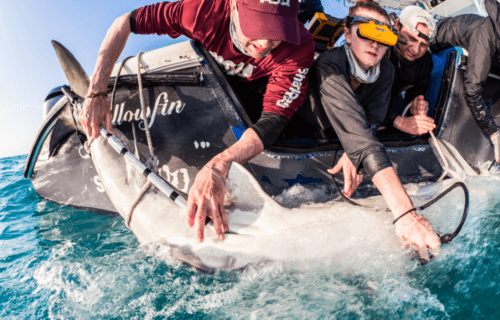TEMPE, Ariz. — New tech that remotely documents the location and time of birth of shark pups may be the “holy grail” that helps prevent their extinction, scientists say. A team from Arizona State University says three-quarters of shark species are at risk of extinction, with humans allegedly killing up to 73 million sharks each year just for their fins.
Sharks have a long gestation period and give birth to low numbers of pups who reach maturity, which makes protecting their numbers even harder. On top of that, their habitats are under threat and many of their preferred birthing areas are no longer safe.
So, two marine ecologists, Professor James Sulikowski from Arizona State University and Dr. Neil Hammerschlag from the University of Miami, have developed a device to track where sharks are giving birth. Once scientists discover their new habitats, conservationists can move in to protect those areas, either by creating sanctuaries or expanding areas already set aside for this purpose.
“If they (the mother sharks) don’t have that suitable habitat, then their babies won’t be able to grow up. And if babies don’t grow up, we have no more sharks and literally, the ocean ecosystem would collapse,” explains James Sulikowski, senior Global Futures scientist at Arizona State University and director of the Sulikowski Shark and Fish Conservation Lab at ASU’s New College of Interdisciplinary Arts and Sciences, in a media release.
“This novel, satellite-based technology will be especially valuable for the protection of threatened and endangered shark species, where protection of pupping and nursery grounds is a conservation priority,” Prof Sulikowski adds.
“We’ve been trying to do this since we started studying sharks. This is our holy grail. We have really advanced shark science, 20, 30, 40 years.”

How does the new tag work?
Scientists have already used the new tech, described in the journal Science Advances, on sand sharks, a scalloped hammerhead, and a tiger shark — all highly mobile species. The intrauterine satellite tag, called the birth-alert-tags (BAT), has to be inserted into a pregnant shark.
The egg-shaped device (two inches long and one inch wide) pops out along with the pups when the shark gives birth. It floats to the surface and switches to transmitter mode, sending messages announcing the time and location of the birth.

Researchers say BAT is already yielding remarkable results. Although scientists once assumed that sand sharks gave birth inland, the new study reveals that they are most comfortable having their pups in abandoned shipwrecks on the ocean floor.
“It was a total surprise,” Sulikowski says. “For most shark species we have no idea where they give birth or how far they must travel to habitats that are essential to their survival.”
Sulikowski notes that creating BAT has been a bumpy road.
“We’ve had every sort of failure that can happen,” the study author concludes. “We had battery failures. We had firmware failures, we had antenna failures. I felt like giving up multiple times. But thanks to my co-author, Neil Hammerschlag, we kept forging ahead and we didn’t give up.”
“Honestly, it feels incredible to have created technology that is going to revolutionize the way that we study sharks.”
The aim is to eventually use the device all over the world to determine areas that are important to sharks and figure out how to protect them.
South West News Service writer Jim Leffman contributed to this report.

